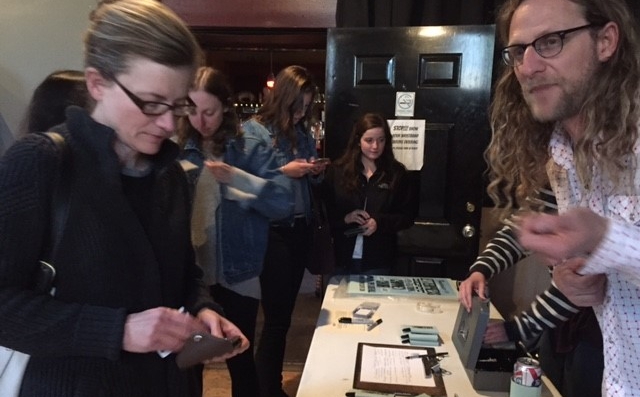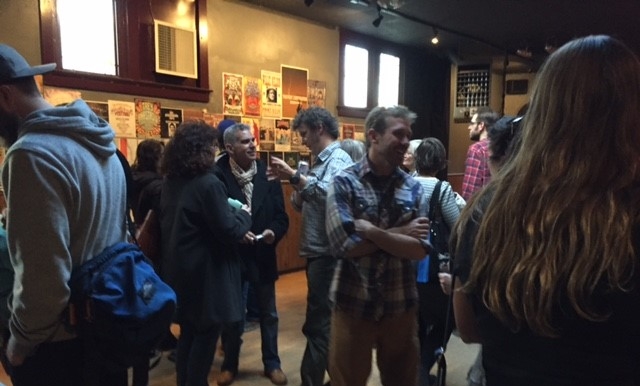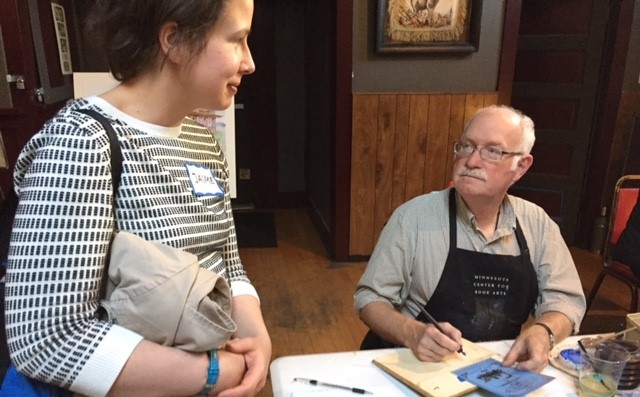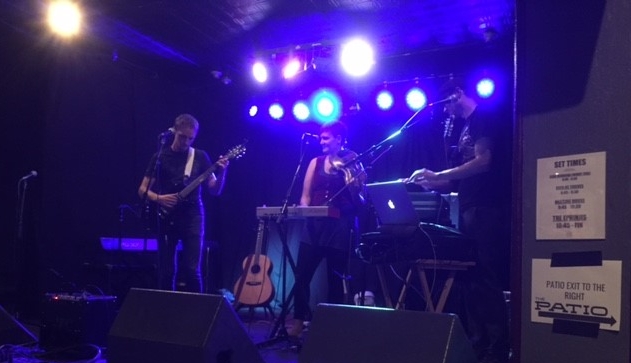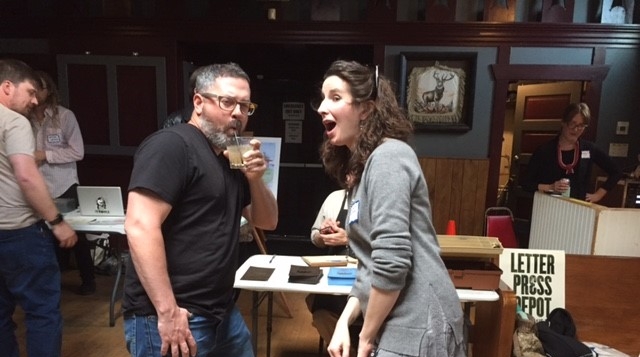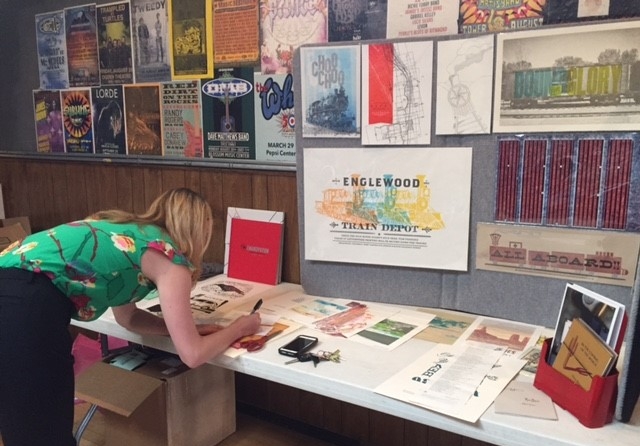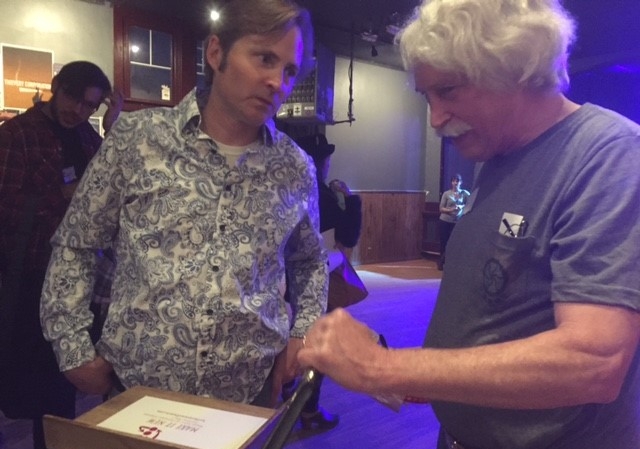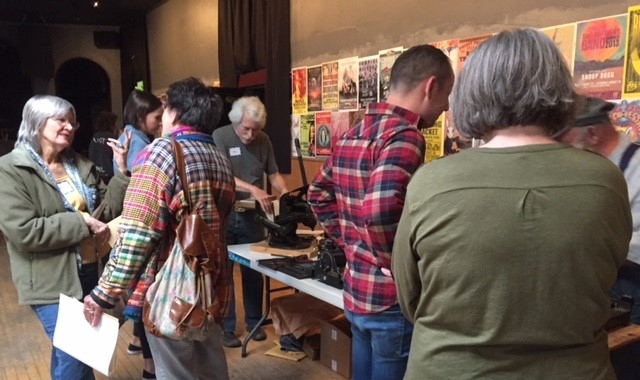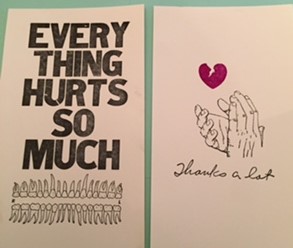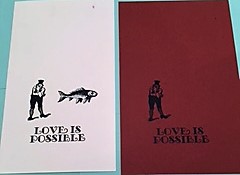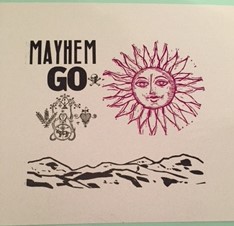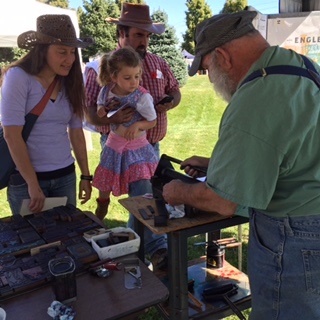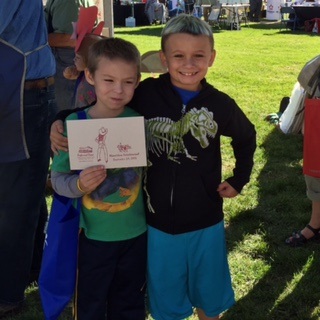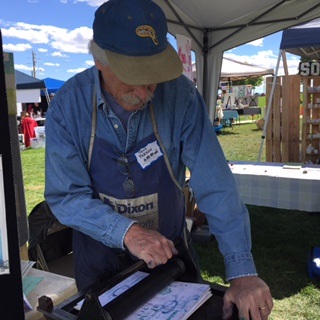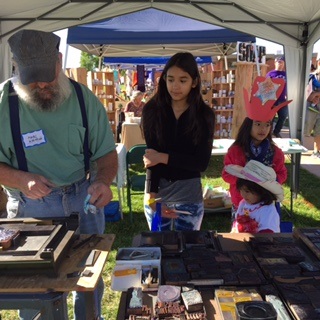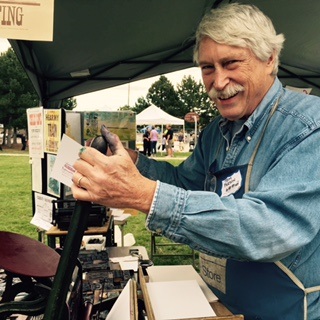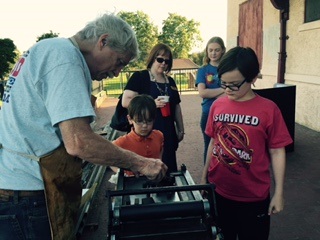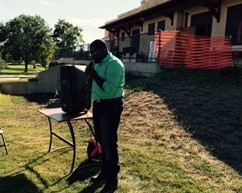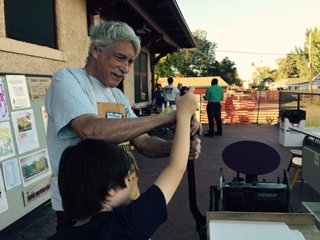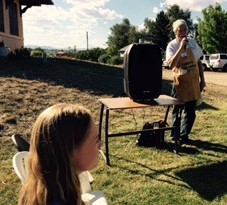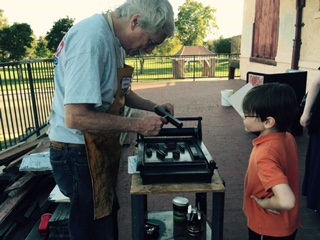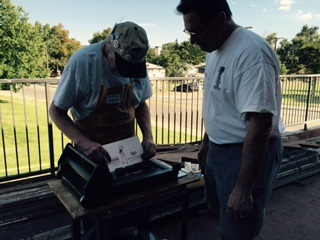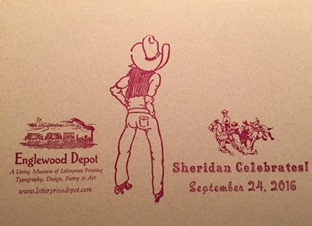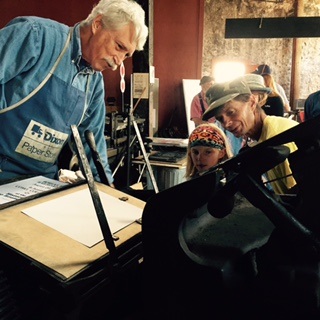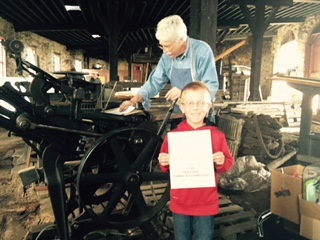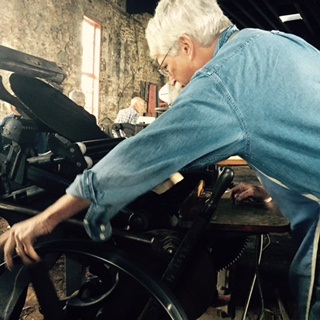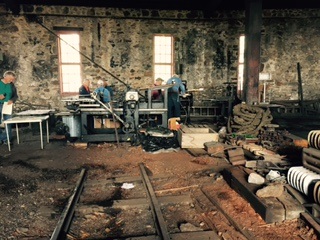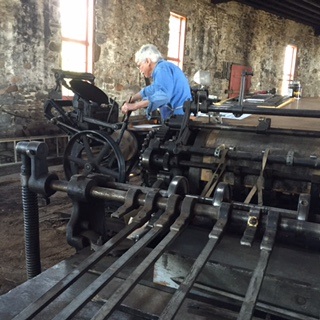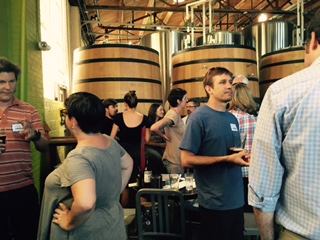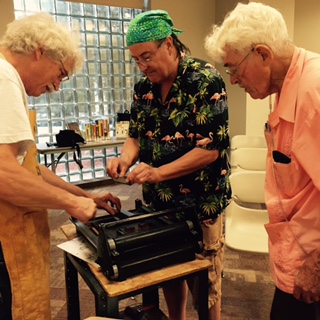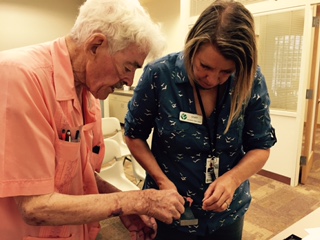We met new friends, got new members, sold some posters and all got to enjoy Chimney Choir. Thanks everyone for the support and love. It takes a community to make it new! Here are some pix of the event
Let me count the ways:
1. Donate a perk to our Indiegogo campaign: We would love to offer some of your work as a
“perk” to people donating to the fundraiser. If you have something to share, email asap to englewooddepot@gmail.com, then send us an image of the item and mail it to Letterpress Depot c/o Tom Parson, 157 S. Logan Street, Denver CO, 80209 so we can list it quickly.
2. Donate money. We love small donors and major ones. Donors over $500 receive special acknowledgement but we are grateful for everyone. You can either donate through our marketplace or give us a call 720-480-5358 or email and we will talk more.
3. Log into our Indiegogo after May 1 and find a perk you cannot live without.
4. Spread the word about our Indiegogo on social media and from the rooftops of your houses.
America's last linotype newspaper - pretty cool!
Steady stream of teens kept board members Alex Jimenez and Tom Parson busy at the presses today at MCA Denver.
Thank you for your support of the Letterpress Depot! Your participation is our community.
In 2017:
- we are planning construction to make the historic Englewood train depot functional for our museum and letterpress projects;
- we expect to continue to offer our resources through workshops, classes, events, demonstrations, sales, exhibits, and sharing of technical advice and information;
- we will increase continuing contact through our website and social media – Facebook, Twitter, Instagram, with regular Meetups, direct emails, blogs, and active committee meetings;
- we expect to get inky!
We are planning a membership meeting for early in the year, to involve and update our members and the broader community.
All these activities depend on your participation! We invite you to join us with suggestions and wishes and energies! Currently we have committees and work-groups focusing proposals and policies for our library resources, our letterpress equipment and type collection, the building construction, landscaping and maintenance, and all aspects of development, as well as organizing and teaching workshops, and further creative printing projects. Consider the Depot your resource! What might you do with it?
Email englewooddepot@gmail.com, or call us at 720-480-5358. I hope to hear from you!
Best wishes for the new year,
Tom Parson, Executive Director
Newly acquired printing cut, from the Zaner-Bloser company of Columbus, Ohio, which offered penmanship courses and materials beginning in the 1880s.
Englewood Depot, Inc. is a 501(c)3 non-profit organization. All donations, new and renewing memberships are being matched 100% through December 31, 2016. www.letterpressdepot.com/marketplace
or by mail to PO Box 798, Englewood CO 80251.
From now until December 31, all donations and memberships - both new and renewal - will be matched up to $7,500. Never a better time to join! And as an extra holiday treat, all posters are $5 off when you enter promo code 918. To join or purchase posters go to http://www.letterpressdepot.com/marketplace/
What a joy to see - glorious type made from pantograph-cut hand-finished hard maple. A visit to Virgin Wood Type Manufacturing Company in Rochester, NY was one highlight of the ATF conference our Executive Director Tom Parson went to this summer. Co-founder Geri McCormick and Matt Rieck and Jim Grieshabe displayed their equipment and type including their newest chromatic type.


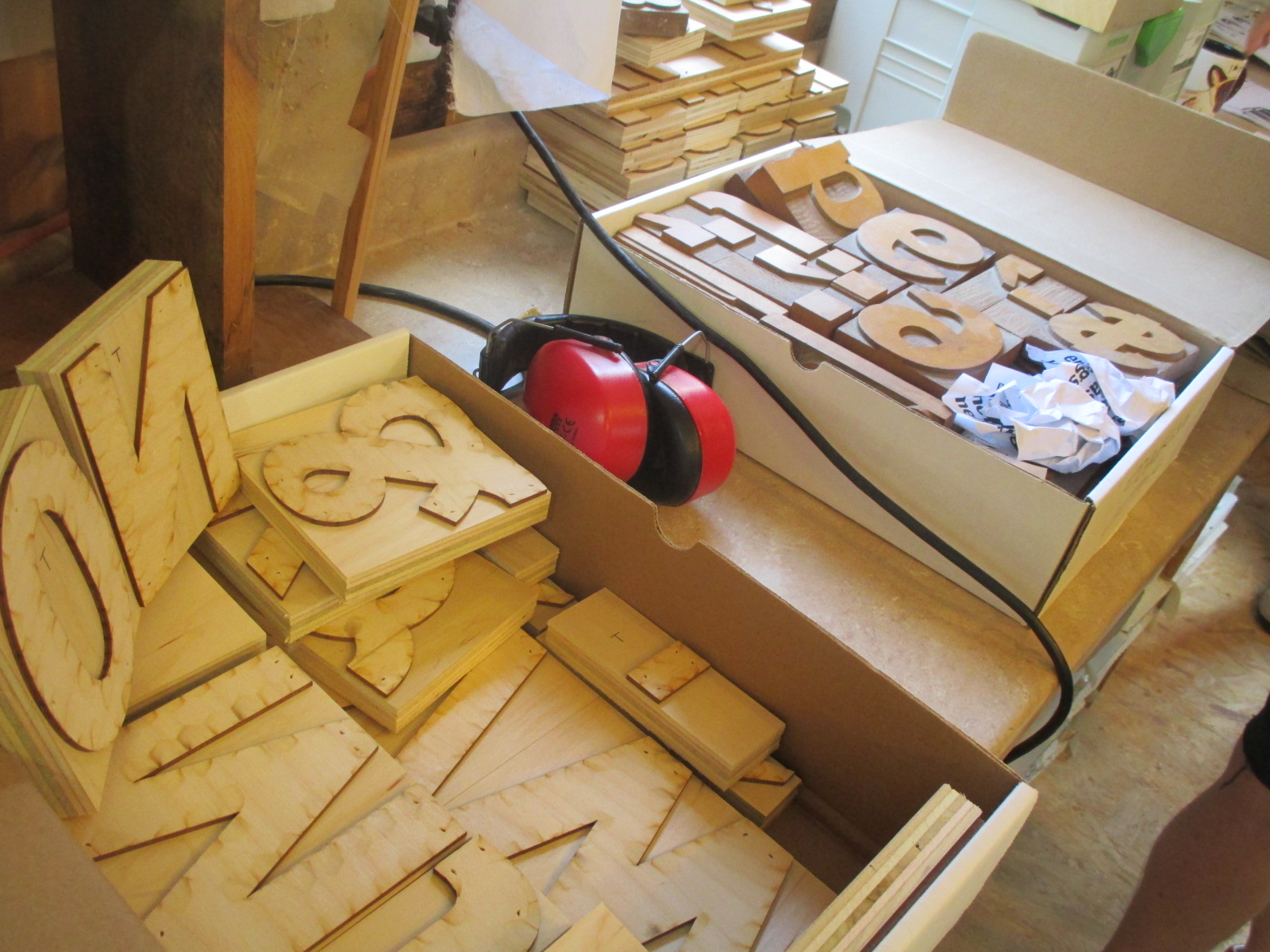
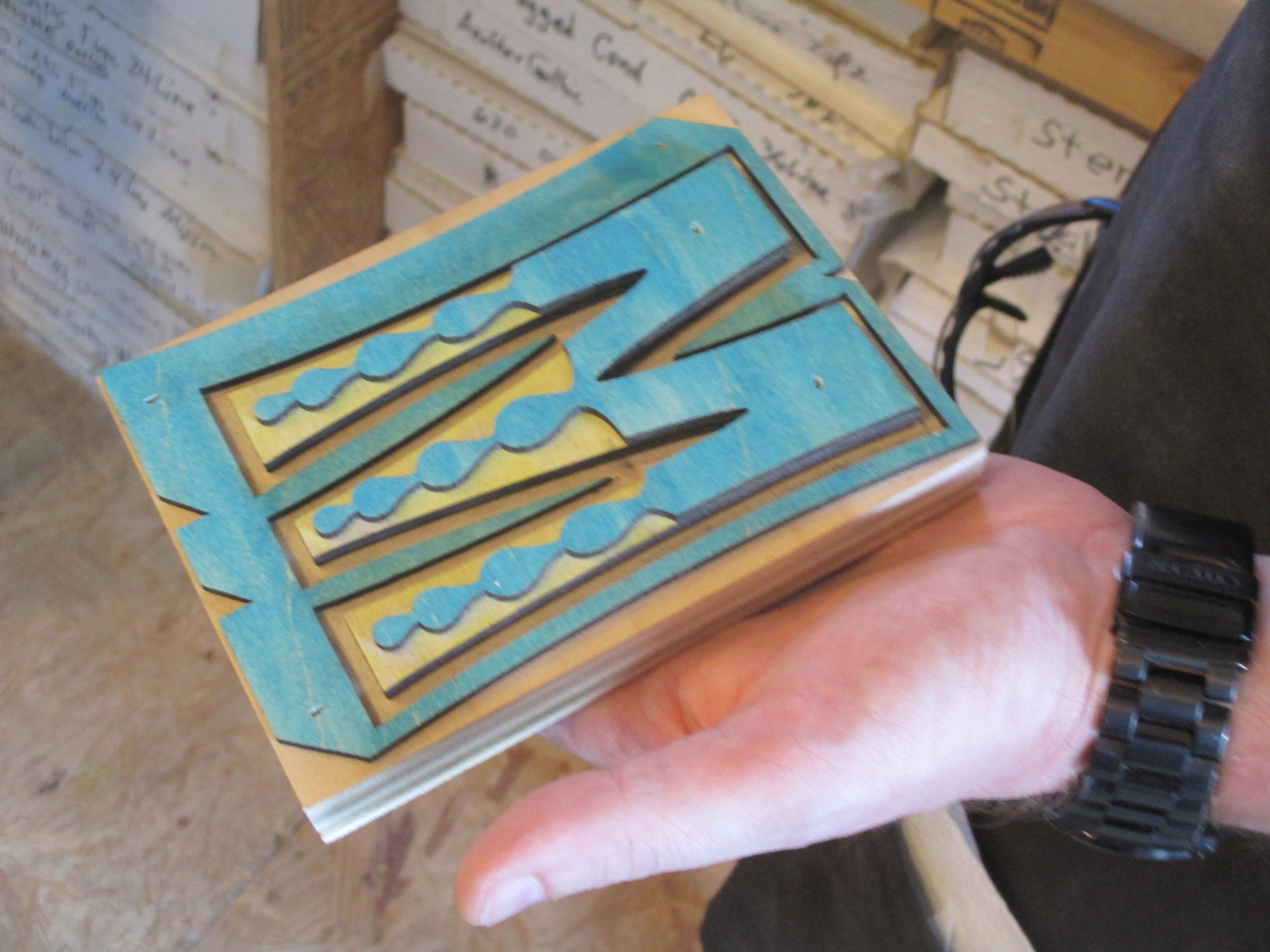
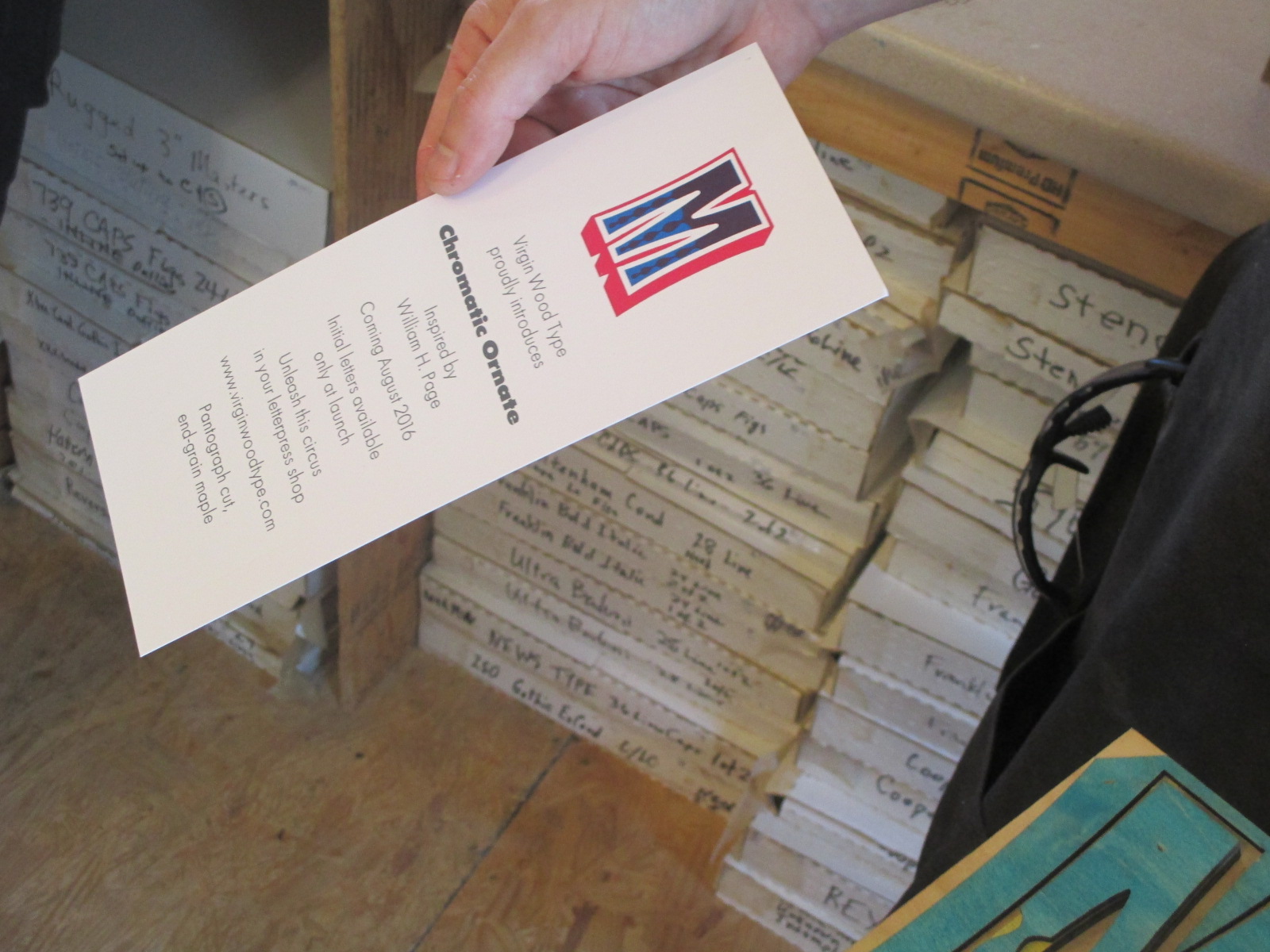
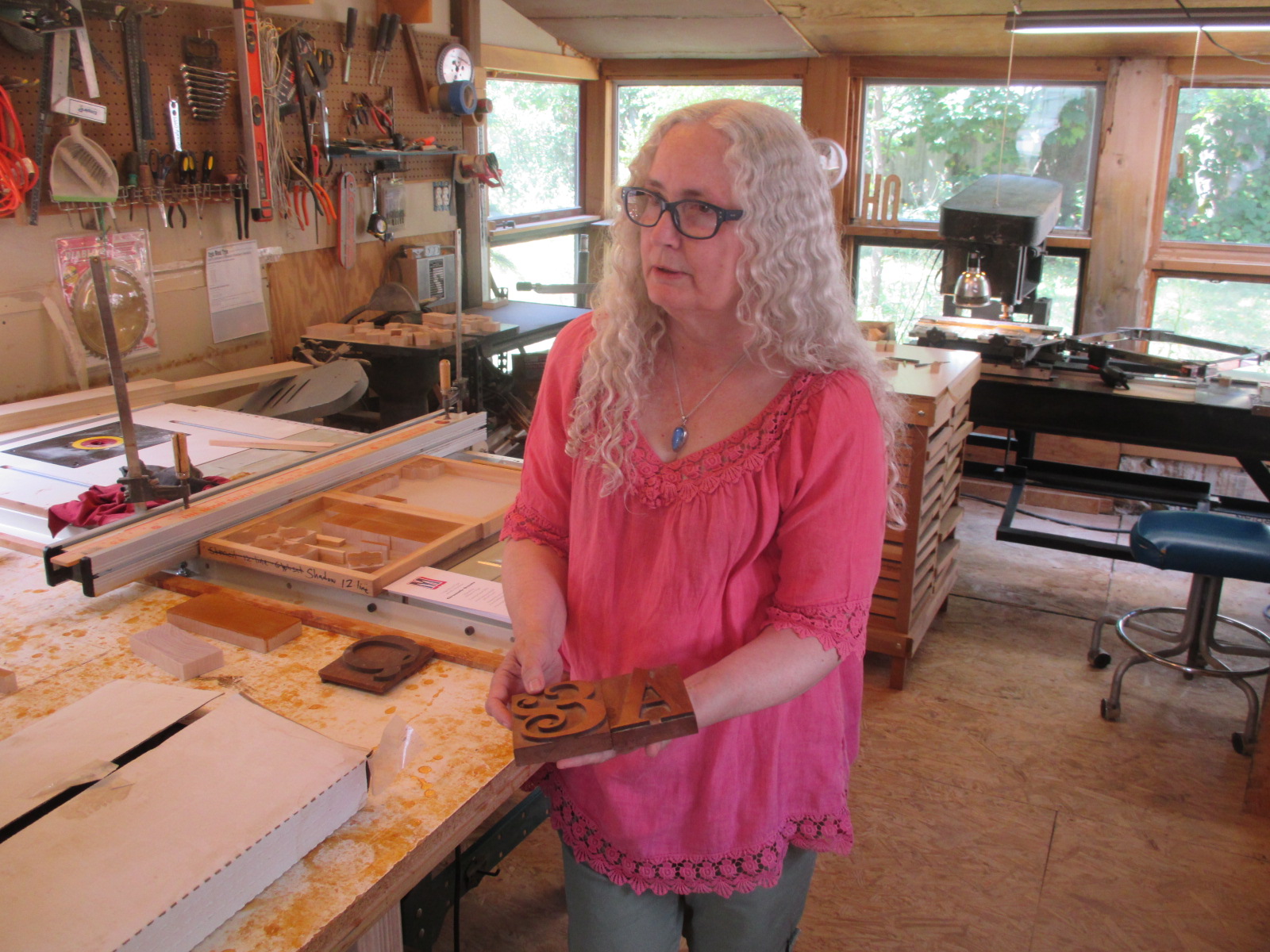

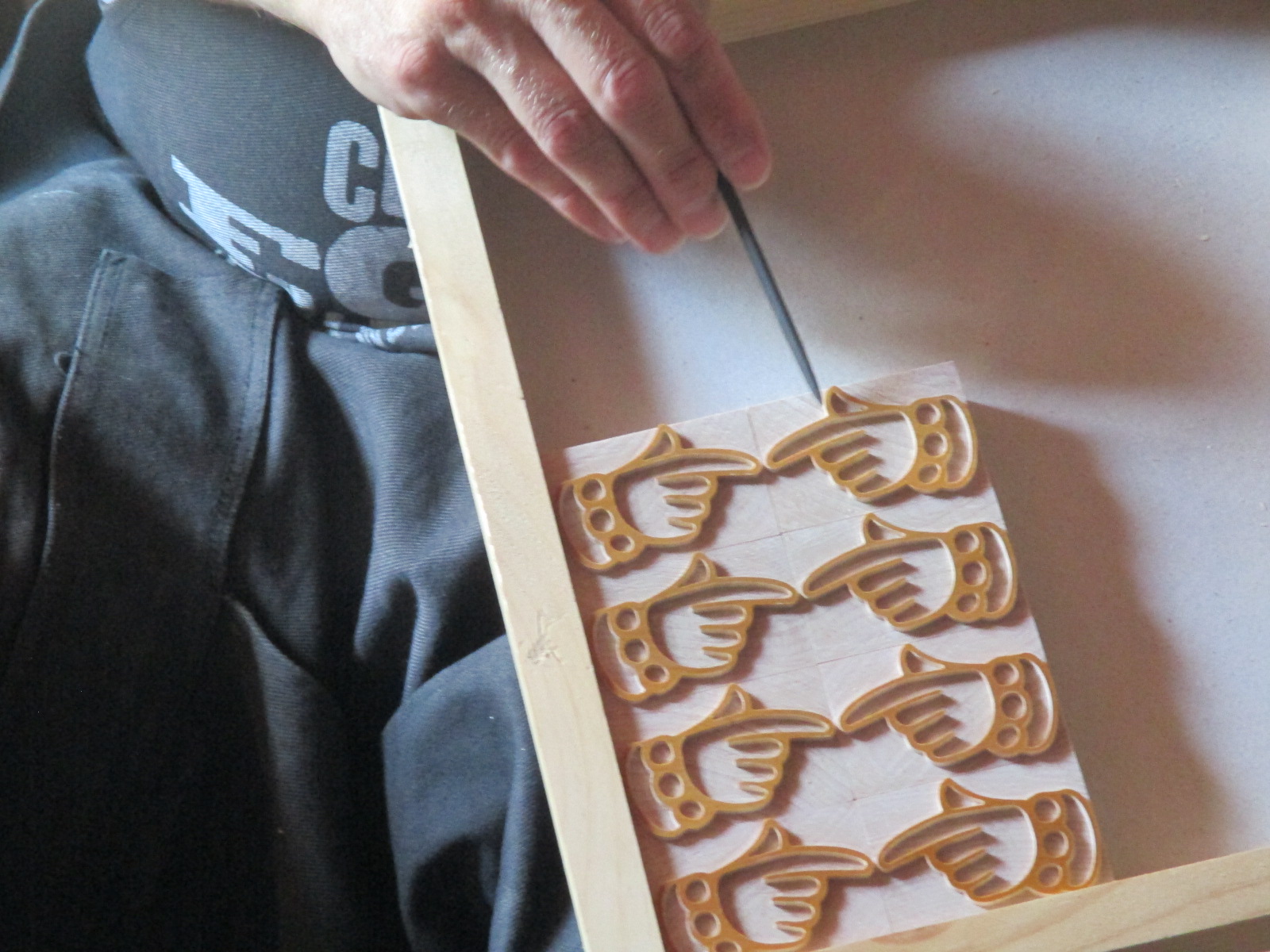
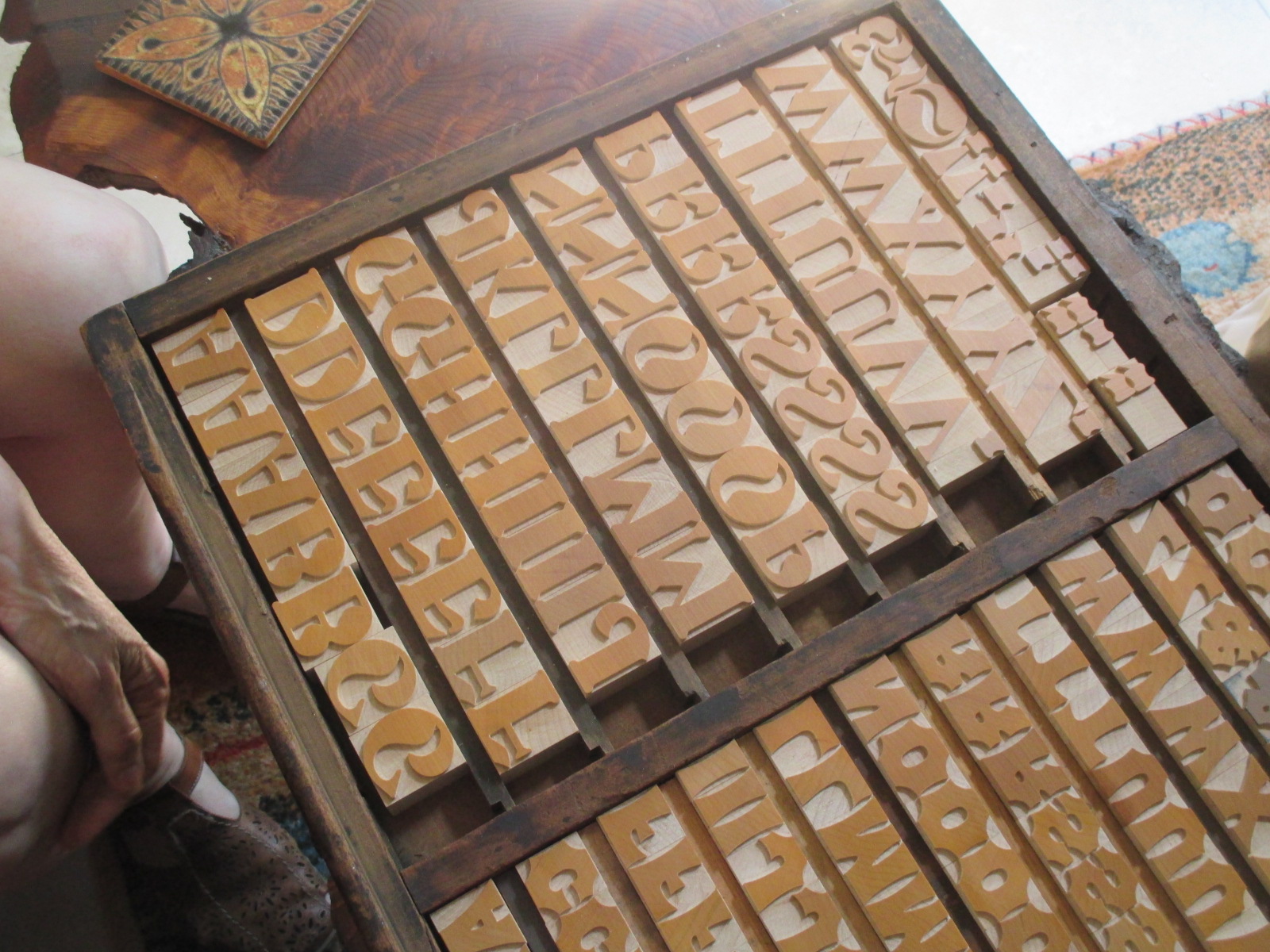
Depot executive director Tom Parson and board member Marc Silberman worked the roller proof press and the Curtis and Mitchell Columbian platen press for those attending Sheridan Celebrates on September 24, 2016.
In 1994, the Depot was moved from Sheridan to its current location. And this past Saturday, Sheridan came to the Depot for a VIP event to honor those who worked so hard on Sheridan Celebrates. Depot executive director Tom Parson printed for the crowd, along with board members Kim Morski, Jason Wedekind and Patti Parson. Organizer Jean Ray was there, along with Sheridan Mayor Dallas Hall, City Council members Tara Beiter-Fluhr and Sally Daigle and other community supporters. They all got to hear Sheridan idol Michael Cox sing. He will be singing again (and Tom printing again) at Sheridan Celebrates, September 24. (See http://www.letterpressdepot.com/events/.)
I have returned to the long journey of restoring, or resurrecting, a beautiful piece of antique printing machinery, the Campbell “Century Pony” flatbed cylinder press. It is a two-revolution press which, unlike the larger “drum cylinder” presses, uses a smaller cylinder that makes two revolutions for each impression on the horizontal bed that moves back and forth underneath. On the bed’s return under the cylinder, impression is avoided by a slight upward movement of the cylinder.
The Campbell Century Pony presses were a great success and were made between 1895 and 1906, being developed out of Campbell’s earlier “Economic” model. My Campbell came with a counter that was dated 1897. This could be a good clue as to its production year. Moreover, during the life-span of a press’s production the number produced is usually weighted toward the beginning. (Yearly production numbers usually tailed off sharply in the final years.) The “Century” was marketed to the approaching new century, and most of the advertisements are seen in the mid-to-late 90s. For example, a picture in an article of 1896 depicts my press very accurately (From Printer’s Ink, Vol. 18):
The article states that the press weighs over 8600 pounds and is valued at $1600 – a pretty penny back then! One online source states that the average wage earner in 1890 made $1.53 a day and worked 279 days a year, thus making about $480 for the year. The Campbell was thus 3.33 years of wages for the average worker of the time. A low wage today ($10 / hr), at 5 days a week for 52 weeks gets you about $20,800 for the year. We might say that the Campbell would be valued at $70,000 in today’s dollars. It’s a high-end “19th century flatbed cylinder press” in design and spirit, which was a major purchase for any upstart printer that took decades of hard work to pay off. One question lingered for me: where was it born?
Where the Campbell Was Built
A little research reveals that the Campbell Printing Press and Manufacturing Company originally built its own presses in Brooklyn but in 1879 the patent owners contracted with Mason Machine Works in Taunton, Massachusetts, to build the presses. It was a windfall for that company, and they expanded their operations. By 1893 some 950 people were employed.
A 1904 article in the Iron Age, Vol. 74, proves that Mason Machine works was still building the presses in 1904. Consequently, it’s almost completely certain that my Campbell was forged and built in this facility in Taunton, Massachusetts:
This is from an 1899 publication of the company. Shipping of presses west probably routed through Illinois. More research in Leadville might uncover its arrival and presence there. I wonder how and when my Campbell press made it to Colorado. There are several scenarios. It may have shipped new to the printing operation in Leadville, sometime between 1895 and 1906. It may have begun its work in some other town, and was purchased used at some later date. It went from Leadville to Arvada in the 1970s, where Mr Stoddardt used it to print posters for Lakeside Amusement Park. It supposedly hadn’t been run for 20 years by the time I heard of it in 2010. It was moved to my shop in Fort Collins in March, 2011. Two weeks ago I inked up the press and flawlessly hand fed 20 newsprint sheets for a letterpress poster through the press. It took one minute, running at 1200 impressions per hour.
I found the little town in northeast Iowa easy enough, but had some difficulty finding the gravel road that led into the country, to the old farmhouse of the Stromberg family, where my printing press awaited.
The weather-worn old farmer was sitting in his truck, waiting for me. The surrounding fields were chest high with corn, and the sturdy old family house was getting rough around the edges – a few broken windows, screen door flapping in the wind, tumbleweeds slapped against the barn.
“We don’t live out here no more,” he said. “Grandpa was the printer, over in Elkader, and after he retired he kept a little shop in the cellar.”
We went around back, and he opened the cellar doors – old-style double doors that revealed concrete steps going down under the house. It was a dank, cobwebby place. Engine parts and tools were piled against the wall. Boxes and old furniture were stacked everywhere. Tom pulled a chain and a bare bulb illuminated the space.
“It’s over here,” he said, and shoved a dresser out of the way. Back in the corner, the iron beast with its big flywheel sat forlornly.
“Is this where he did his printing?” I asked.
“Yup. I can remember Grandpa workin’ down here, and all those little metal pieces of type. He did the church announcements and other things - birthdays and flyers fer raffles and what not.”
“Any other old printing stuff around?”
“Let’s see … this cabinet is part of it.” He pulled a tarp off a wooden cabinet and opened some drawers. Ding bats and type, wood furniture. Despite the tarp, a leaky window had dripped for decades and damaged one of the sides of the cabinet. But is was old hard wood, and still sturdy.
Lingering over the family treasures, the old guy seemed to dwell on old memories. Then he blurted, “Well, we got some type, some ruler things and gizmos here … whatever was for the printer is yours.”
Tom and I hauled the cabinet out of the basement ourselves – nine steps up, and tipped it into my pickup. I slid it toward the cab and roped it down.
Now I faced the main dilemma – moving the beast. I estimated it weighed about 1200 pounds. One strategy is to take it apart, which is not advisable due the likelihood of stuck gears and stubborn bolts. All advice was to definitely not fiddle with it, haul it straight out, if possible, and onto your truck.
I got my winch, chains, boards and rollers from my truck and started clearing a path to the stairs. Metal pipes would serve as rollers. Luckily it was already bolted to hard wood 2 x 4s. A heavy duty pry bar could be wedged under one of the leg supports, to lift the beast just high enough the get one of the rollers in on the corner. Then the other corner. Then the backside too. Once on rollers, you could push it pretty easy.
At the stairs, I chained it around and tied my winch around a tree outside. Then, downstairs, I pried the beast up to the first stair, yelling to Tom to crank the winch. We did this till it was angled up onto the stairs’ incline, tipping a bit precariously but in position. I climbed over and out the cellar, and slowly cranked the winch, one inch at a time. I climbed back into the cellar, and out again, back and forth, making sure it was clearing the steps. One false move, or broken chain, and its cast iron limbs would be shattered. As rain clouds blossomed and distant thunder threatened ominously, the iron beast rose slowly, slowly emerging from its cave of some sixty years.
An Old Style Gordon, 8 x 12 chase size, never motorized, with intact foot treadle. Nice. Complete, no breaks or welds. With the V-shape throw-off arm, so an early model. Probably about 1890. Letterpress printing, a dying art, replaced by offset in 50s, and computer laser printing in the 90s. But it was real printing, with metal type, impressing the page with the inked type, just like Gutenberg did over half a millennia ago in the 1450s.
Outside, the second challenge became apparent: Hoisting it up my wooden ramp into my pickup. “Wait a minute,” Tom said, and disappeared into the barn. A few minutes later a trench digger tractor emerged, with a big dump bucket on the front. “I see what you have in mind,” I said. “Let’s chain it up!”
Together, we strategically wrapped chains around the press and used the tractor’s bucket arms to lift the beast straight off the ground. I quickly back my pickup truck under it. Tom smiled at his ingenuity as he lowered it onto the bed. The rest was a mess of compression straps and ropes, a chore that always took me forever and made me feel like one of the Three Stooges, unraveling and retying endless knots. As the rain started plunking down, I bungeed a tarp all the way around. Wouldn’t want the beast to rust before we got home.
A couple hours of work, a few scraped knuckles, and it was mine. And $100. Tom had disappeared into the house. When he finally returned he handed me a book. A big old ATF type specimen book.
“Thanks, Tom,” I said.
“I was gonna scrap it,” he said. “But I just couldn’t bring myself to do it. Grandpa spent a lot of time with that machine. So I’m glad I found someone to use it.”
I waved as I pulled slowly away, with a 15-hour drive in front of me. Yeah, these old machines were discarded and scrapped wholesale in the 70s. But you still find a few around. Thank God for guys like Tom (and Craigslist), who make an effort to get them placed in caring hands. At 1200 pounds, he could have gotten $200 at the scrapper for it. ‘Course, you’d still have to haul that big old beautiful beast out of its cave. This is one beast that will live again, doing what it was born to do – press inked metal into paper and make books. Books that in all likelihood will far outlast digital printing.
(c) John Major Jenkins. Read more about his work: http://alignment2012.com/OakRootPress.html
The following is the first of a series of blogs by John Major Jenkins about the finding and restoration of disappearing presses.
In the late 19th century and early 20th century, these big cylinder printing presses cranked out newspapers in towns and cities across the country. They weighed several tons and once in place, they were bound to stay there until it was time to haul them away to the scrap yard. Today, there are only a few of these presses surviving. Even if the desire to save a big old press exists among letterpress enthusiasts, the expense and difficulty of moving it all too often ends up with the same result — off to the scrap yard it goes. This was sadly the case just recently, when two flatbed Miehle presses from Globe Printing in Baltimore could not be saved.
The legacy of printing in America — which paralleled the rise of industry and steel manufacturing, followed by the Detroit car-making boom — is fast becoming a fading echo, a legend of when America produced lasting things of quality. It’s a testimony to solid engineering, design, and attention to quality, that many of the old Chandler & Price platen presses are still around today. They’re lighter than the big cylinder machines, and because of that many of those are still to be found in hobby shops. But a big four-ton beast like the Campbell newspaper press? What are the chances of one of these 19th-century Goliaths making it into the 21st century? Well, not very good. When I heard of one in a garage near Denver, I had to investigate…
The Campbell Printing & Manufacturing Company produced presses as far back as the 1880s. Its “Century Pony” press came in three sizes. The one I found is the smallest, with a printing area of 22” x 34”. Advertised as a “book press” capable of consistent registration over long runs, it could also be used to print the standard newspaper sheet. The Century Pony presses were made between 1894 and 1905, with the bulk of production on the front end of that timeline. The design is related to the Campbell Country Cylinder press of the 1880s, which was hand cranked. No serial numbers can be found on the press for precise dating, but I estimate that it could date to around 1897-1900, because I found an old counter in a box with a patent date of 1897. Production always trailed off toward the end of a model’s lifespan, so very few presses were probably made after 1900. After all, it was promoted as the “Century” press, a turn-of-the-century wonder. In any case, the model was designed in the 19th century.
And so it came to pass. With the help of my friend Don Hildred, we moved the press from Arvada to my shop in Fort Collins in March of 2011. It was a tight squeeze getting it situated in my shop, Oak Root Press. Working on various issues, such as finding a new motor, it took over a year to get it running and do some test prints. I was told that, in the 1980s, it was used to print posters for the Lakeside Amusement Park in Denver. It is the highlight of any visit to my shop, and was featured in a “Forgotten Fort Collins” article in 2013. I know of only two other Campbell Century Pony presses in the United States, and both of those are non-operating, and one of them is soon to be scrapped. I have printed large format posters and news-sheet tests, and plan on producing a one-sheet newspaper called The Poudre Valley Letterpress Times.
Want to know more? Go to http://alignment2012.com/OakRootPress.html
9800 feet on a cool day with the smell of sage pungent in the air. This past weekend, board members Tom Parson, Marc Silberman and Patti Parson were at Como Roundhouse, the last remaining stone narrow gauge roundhouse in Colorado, to print on a 12x15 C&P Gordon Old Style press and talk Depot talk. We bonded over printing and railroads and vintage equipment with hundreds of people from the mountain communities, from Denver, from Wisconsin and Minnesota. And then there were two young women who had biked from Banff, and stopped on their way to the Mexico border! Besides the C&P, there was a non-working Miehle Pony press used to print the Fairplay Flume. One last page still set up on a chase - an announcement about burro races, with the band Zephy and appearances by Allen Ginsberg and Peter Orlovsky. What a frozen moment in time!
Oh and the thing that was missing? A way to power the C&P. No motor…that was ok. But no treadle either. All depended on an inexhaustible left arm on the flywheel, which Tom supplied.
Our second meetup went 2 hours more than scheduled because the talk and beer kept flowing. Thanks to all who came and the friendly barfolk at Epic Brewing.
We just put in a whole bunch of new events in Events & Workshops. So check that out now!
The Depot’s Executive Director Tom Parson and 95-year-old Harry Fleenor gave a printing demo and some lessons in typesetting at the Englewood Library’s DIY day. Harry sold Tom his first Chandler and Price press, back in 1983. All three - the press (and its over a dozen companions now), Tom and Harry - still going strong. And helping excite new generations.
Tom then headed to Madison to visit the Library of Amateur Journalism at the University of Wisconsin, which was part of the joint AAPA-NAPA-The Fossils conference this year. He got to not only see the beautiful view from his hotel, but to touch and feel and see the amazing collection. Journals like The Junior Press from 1883 and a Parlour Press popular in the Victorian era were on display. An early binding project crammed them all together big and small, as you can see below. For those interested in old letterpress journals, you can see a history online. Tom also has an immense collection that needs sorting and assessing for a future place in the Depot. Let us know if you're interested in digging in.

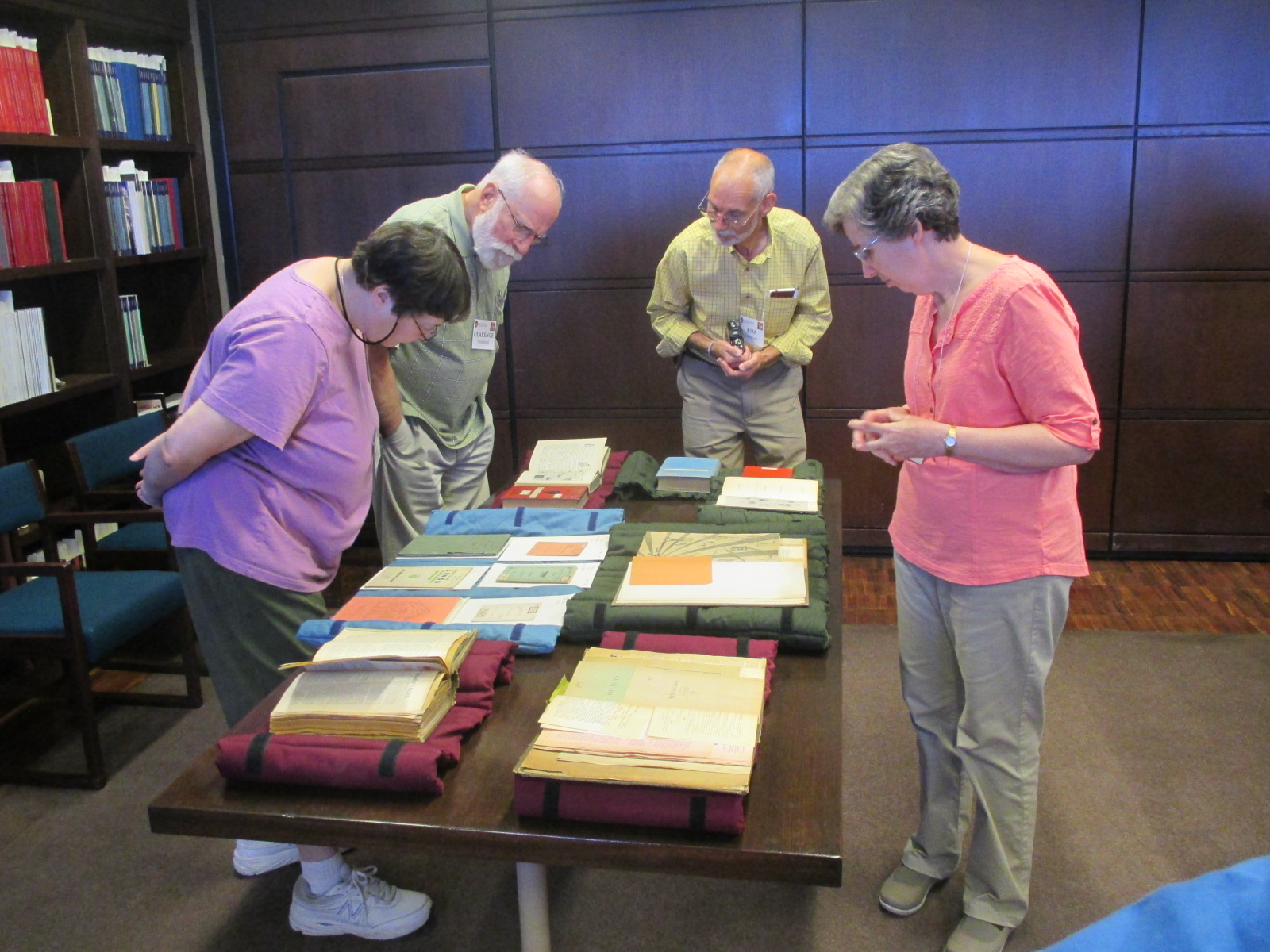
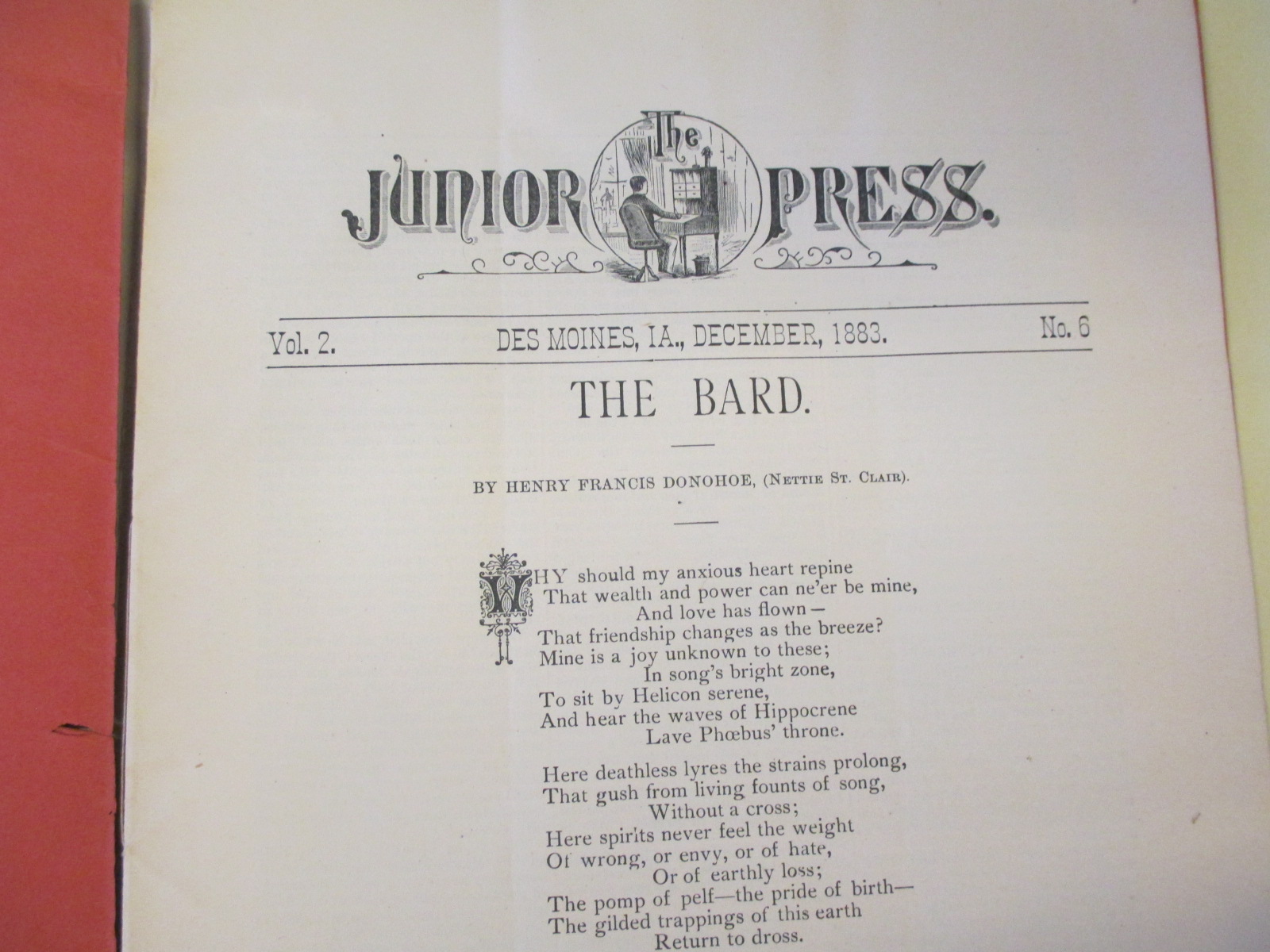

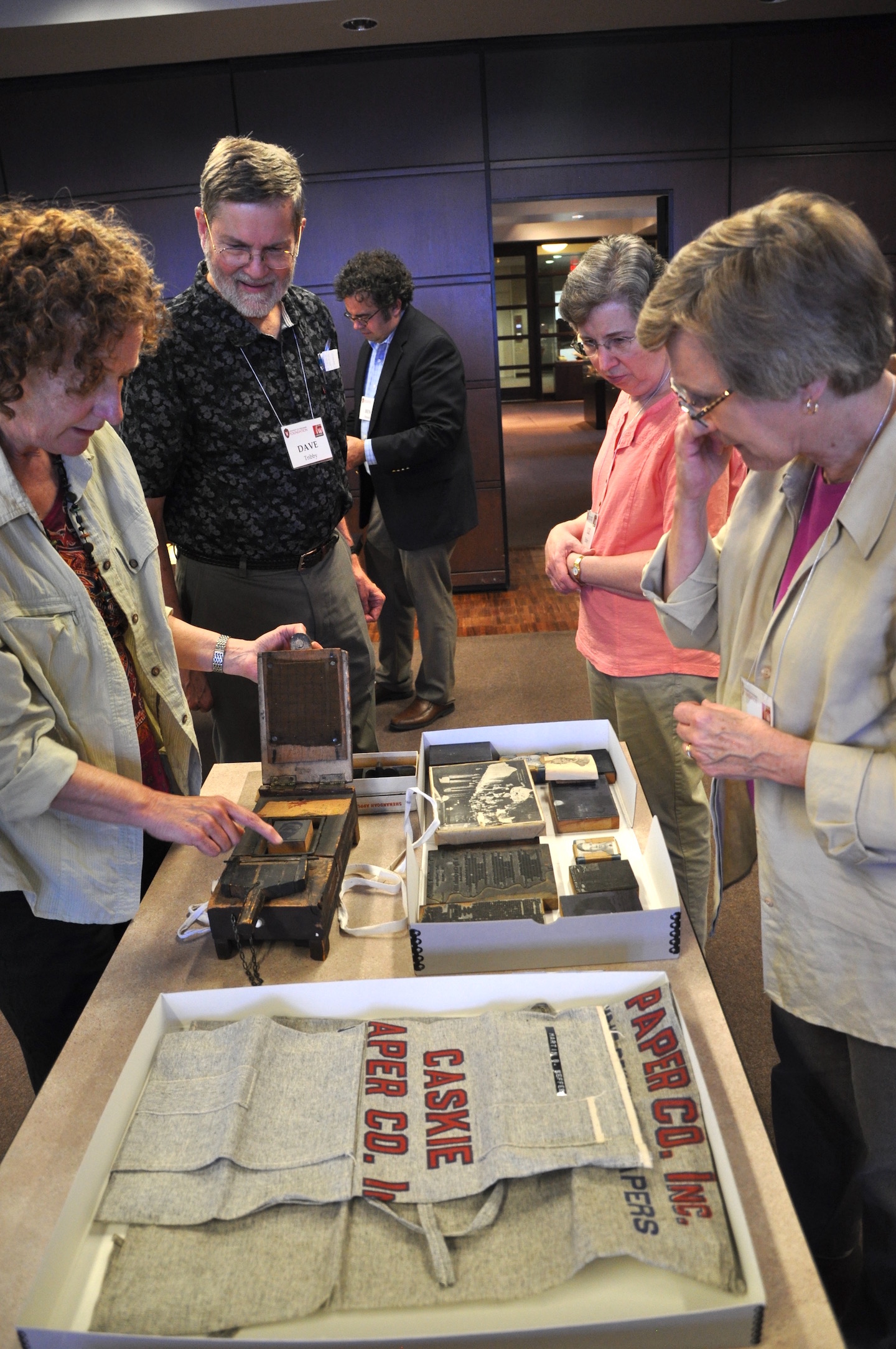
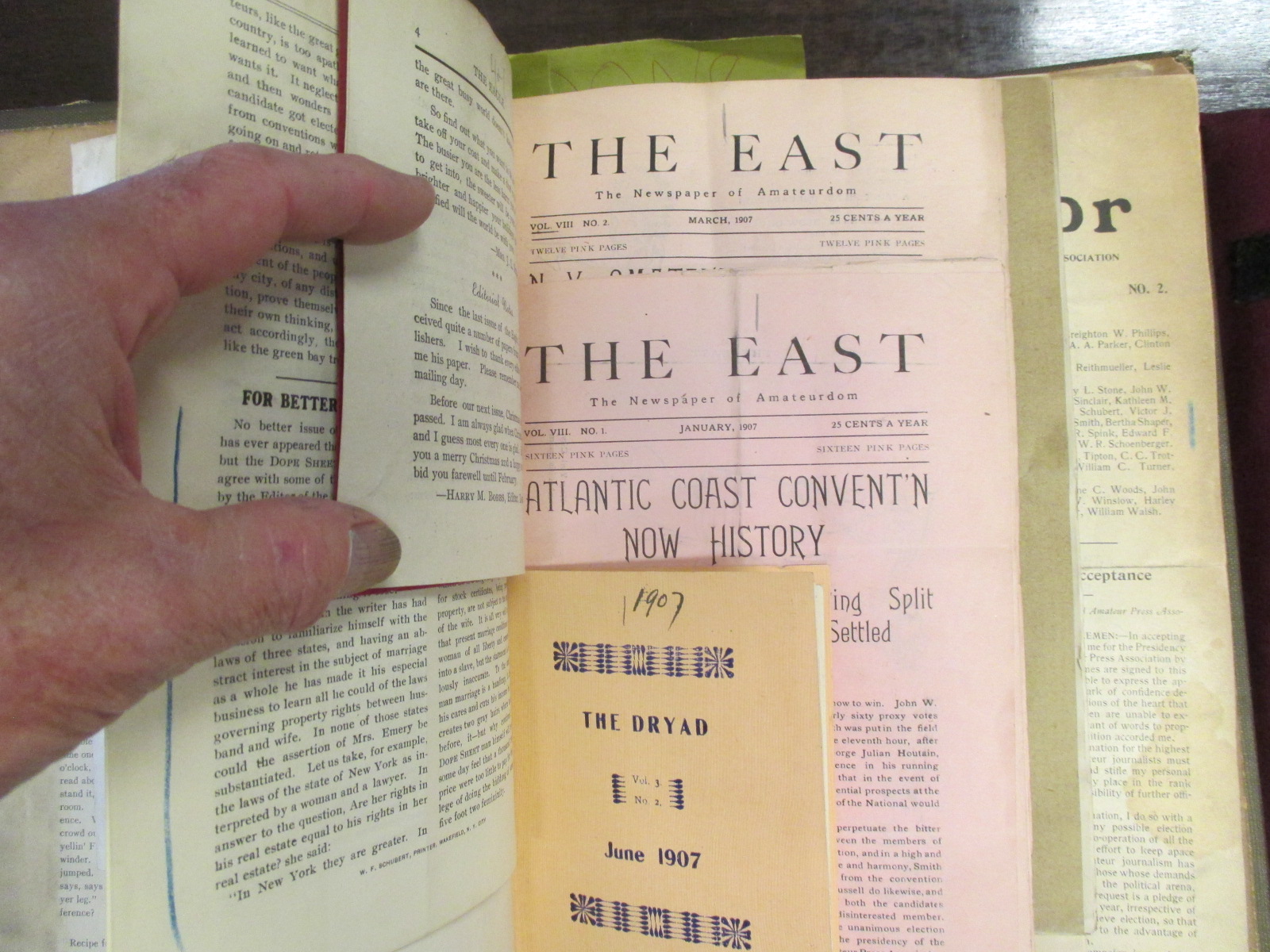
Join us tomorrow morning at the depot for a visit with Sky Shipley of Skyline Type Foundry, 10 to noon, Thursday, June 29, 2016.
Returning from the Amalgamated Printers Association's annual Wayzgoose this week in St Louis, on his way back to the foundry in Prescott, Arizona, Sky has a truckload of beautiful newly cast printing type available!
His full catalog of type, ornaments, borders & initials is online at https://skylinetype.com.
Skyline offers affordable fonts of the best metal printing type being cast today, including classic and modern designs and numerous extraordinary and rare 19th century typefaces. Questions and discussion welcome!
Englewood Letterpress Depot is located on the corner of West Dartmouth and South Galapago in Englewood, Colorado, just off Santa Fe Drive.
Rehabilitation of the historic depot as a Living Museum of Letterpress Printing, Typography, Design, Poetry & Art, and other projects of Englewood Depot, Inc, may be followed on our website www.letterpressdepot.com and on social media.
For further info: 720.480.5358.
It was great to see all those who came to our meetup, to hear new connections form over letterpress and design conversations, and to discover Our Mutual Friend Brewery Two hours became four hours and still the talk went on. We will definitely do this again!


